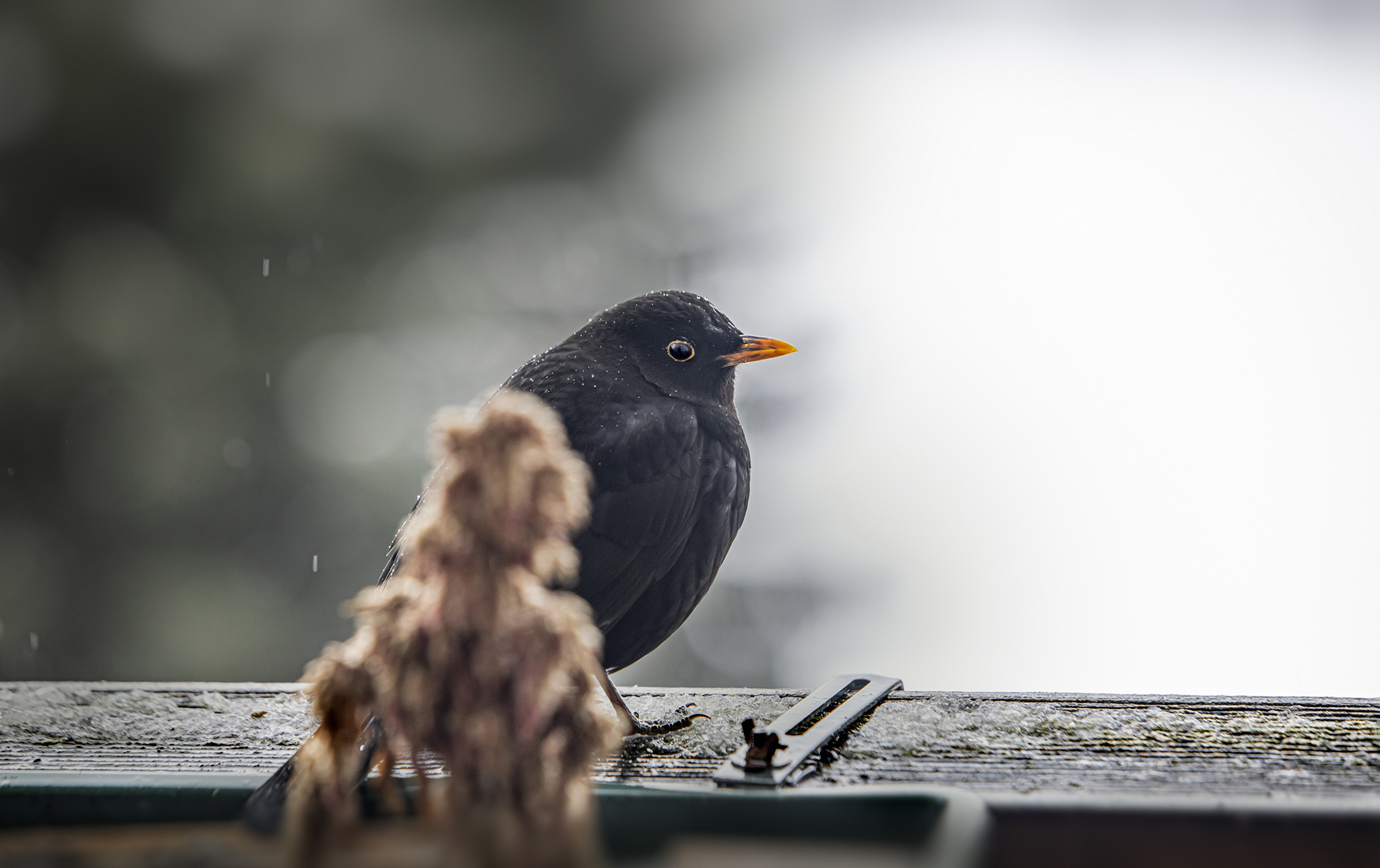Common Blackbird (Turdus merula)
The Common Blackbird is a widespread and well-known thrush species found across Europe, Asia, and parts of North Africa. Recognized for its melodious song and adaptable nature, it thrives in both rural and urban environments.
Physical Description
- Size: 23–29 cm (9–11.4 inches)
- Wingspan: 34–38 cm (13–15 inches)
- Weight: 80–125 grams
- Male:
- Jet black plumage
- Distinctive bright yellow-orange beak and eye-ring
- Female:
- Brownish plumage with a mottled breast
- Dark brown beak
- Juvenile:
- Resembles females but with speckled patterns on the chest
Habitat
- Found throughout Europe, Asia, and North Africa, with some populations migrating to warmer areas in winter.
- Common in woodlands, parks, gardens, farmland, and urban areas.
- Adapts well to human environments, often nesting close to houses.
Behavior & Diet
- Feeding:
- Omnivorous; diet includes worms, insects, berries, and fruits.
- Often seen foraging on the ground, turning over leaves in search of food.
- Vocalization:
- Rich, fluting song, especially at dawn and dusk.
- Males sing from high perches to defend territory.
- Alarm call is a sharp, repeated “chink-chink.”
- Territorial:
- Males are highly territorial, especially during breeding season.
Breeding & Nesting
- Breeding Season: March–July
- Nests:
- Cup-shaped, built from grass, twigs, and mud, often in bushes or trees.
- Eggs:
- 3–5 bluish-green eggs with brown speckles.
- Incubation:
- About 13–14 days, mainly by the female.
- Fledging:
- Chicks leave the nest in 12–16 days but remain dependent on parents for another 2–3 weeks.
Threats & Conservation
- Threats:
- Habitat loss and urban expansion.
- Predation by cats, hawks, and corvids.
- Conservation Status:
- Least Concern (LC) on the IUCN Red List.
- Adaptable and widespread, populations remain stable.
Interesting Facts
- Males sing at dawn and dusk to mark territory and attract mates.
- Urban blackbirds often sing louder than rural ones to compete with city noise.
- They can live up to 5 years, though many don’t survive their first winter.
Summary
The Common Blackbird (Turdus merula) is a familiar and much-loved songbird with its beautiful melody and striking appearance. Highly adaptable, it thrives in gardens and woodlands, making it a frequent sight across its range.
Visited 908 times, 2 visit(s) today
Views: 1301
Subscribe to the newsletter:
